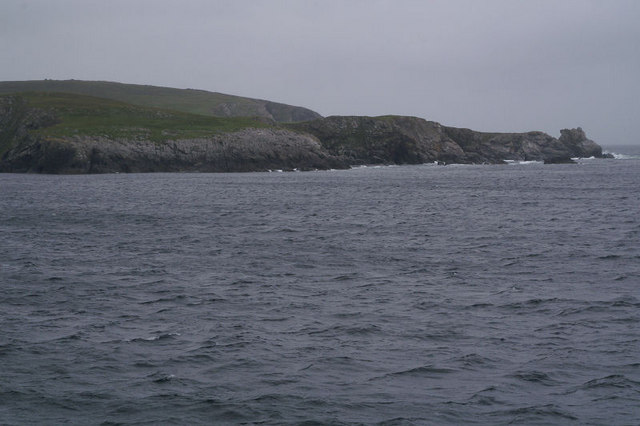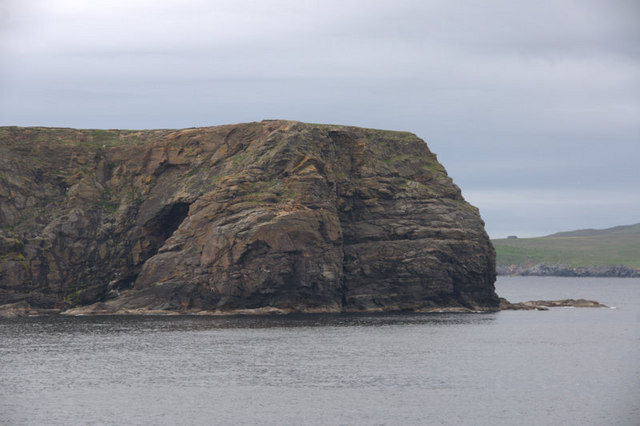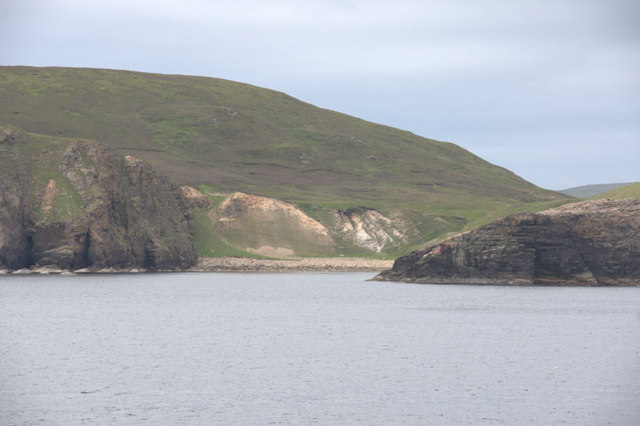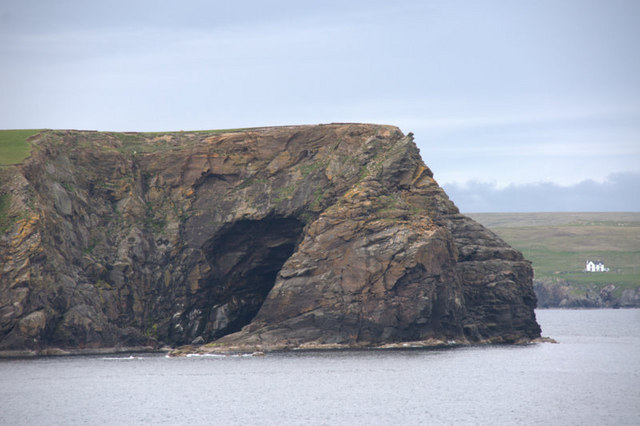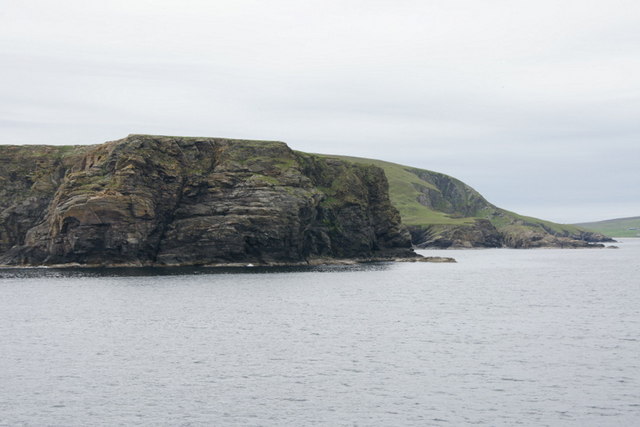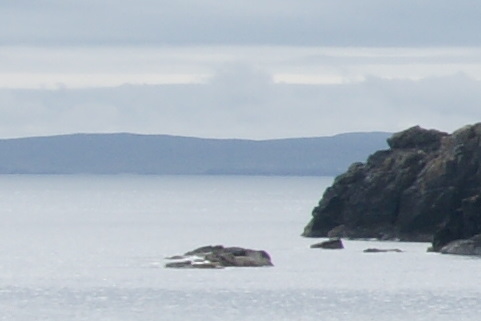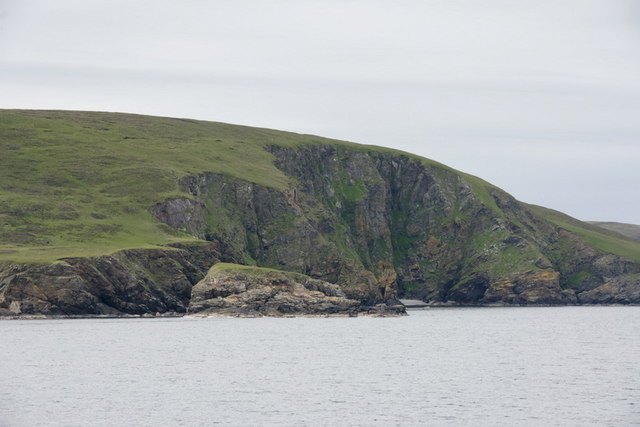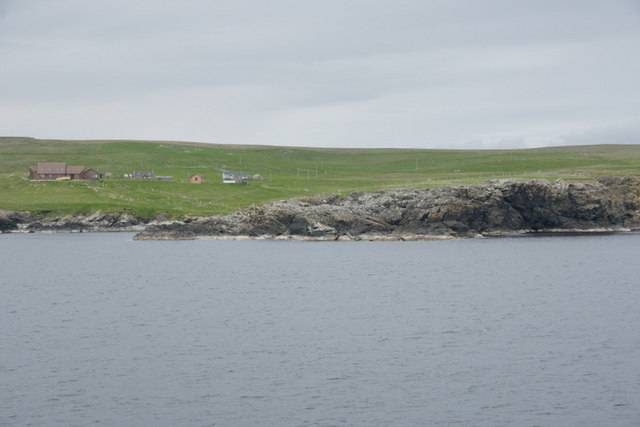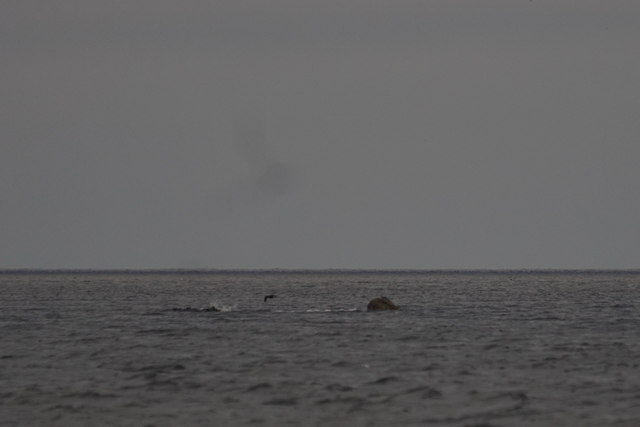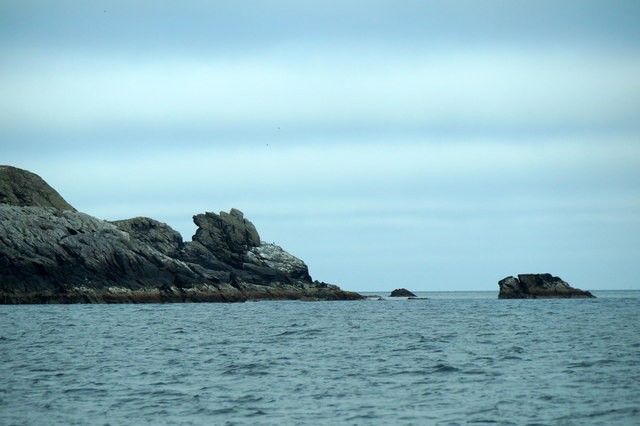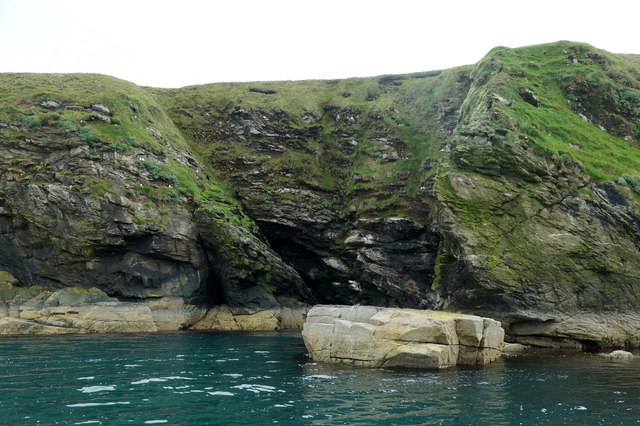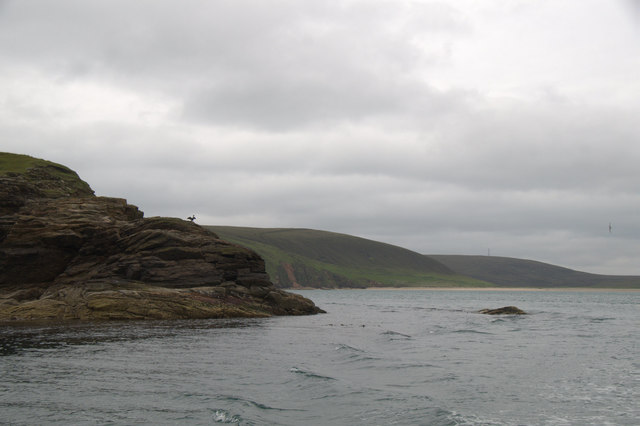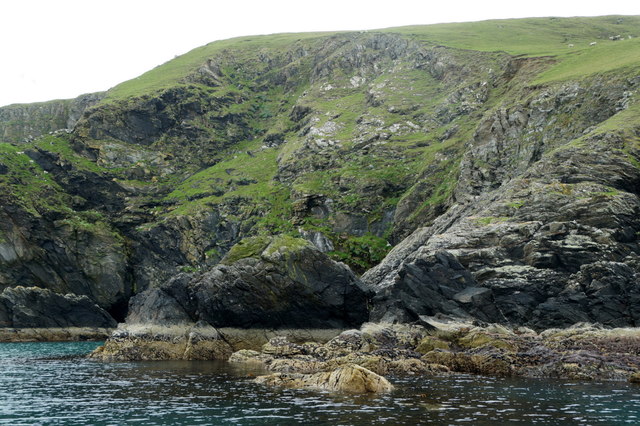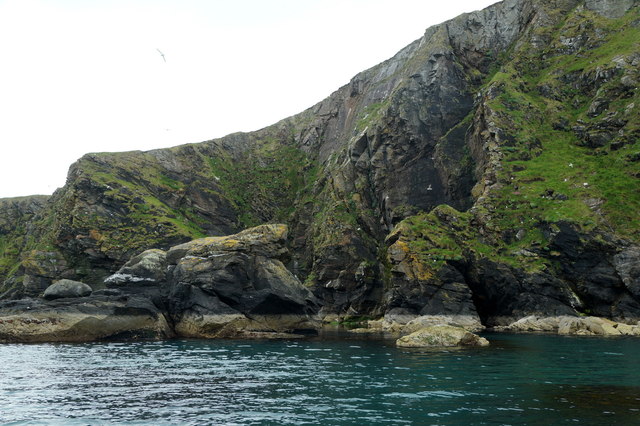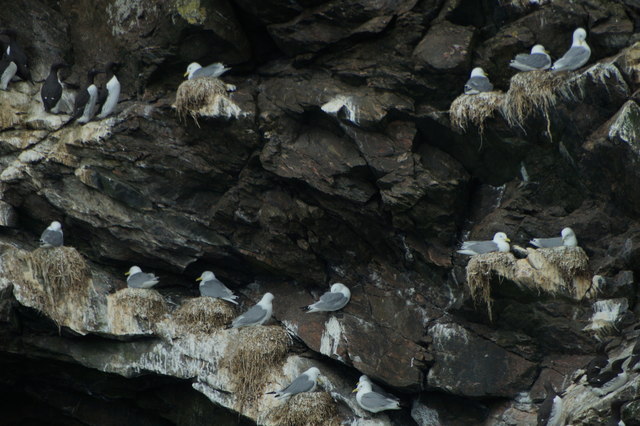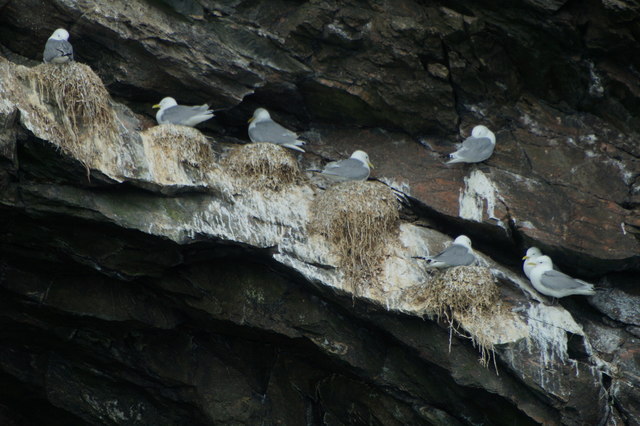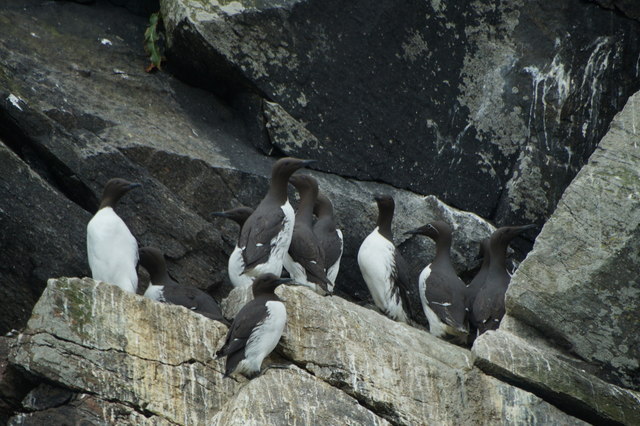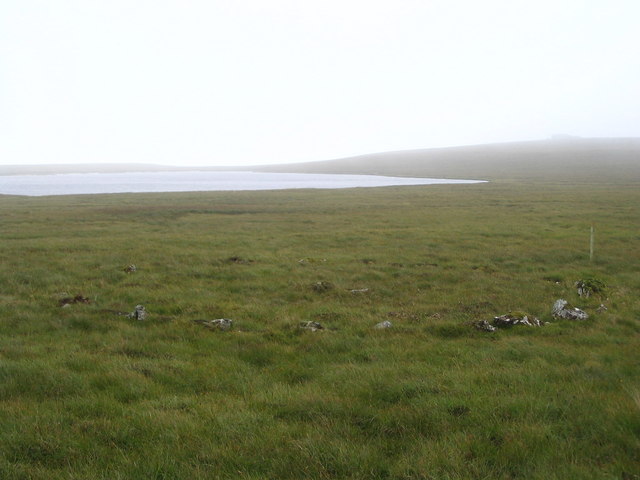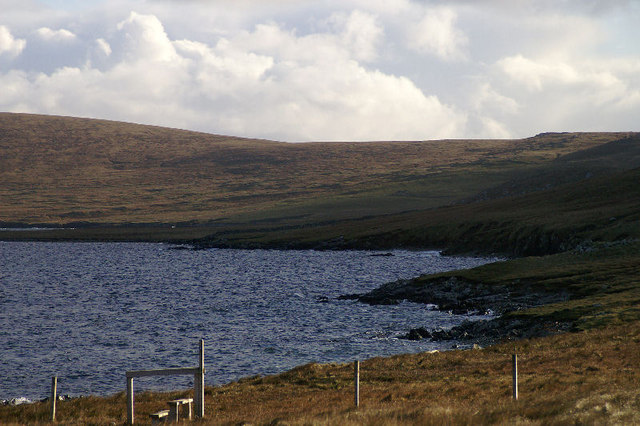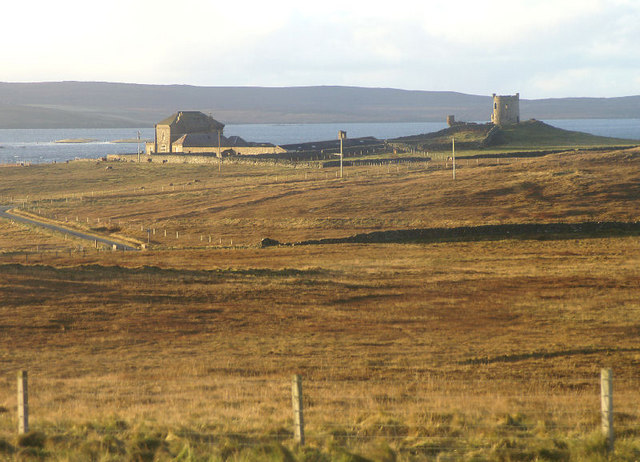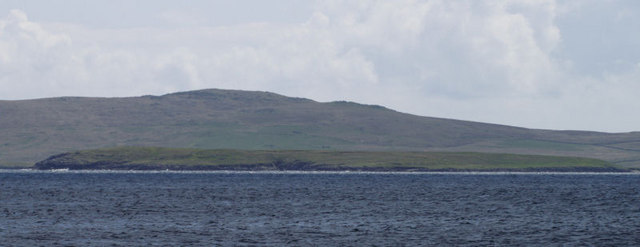Big Holm
Cliff, Slope in Shetland
Scotland
Big Holm
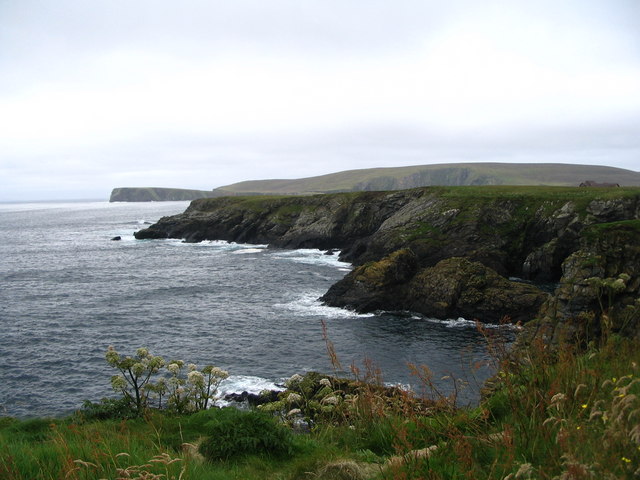
Big Holm is a prominent cliff located in the Shetland Islands of Scotland. Situated on the west coast of the Mainland, it is one of the many stunning natural landmarks in the region. Rising to an elevation of approximately 120 meters (394 feet), Big Holm offers breathtaking views of the surrounding coastal landscape.
The cliff has a distinctive rugged appearance, with its sheer rock face dropping dramatically into the North Atlantic Ocean below. Its geological composition primarily consists of sandstone and shale, showcasing layers of sedimentary rocks that have been shaped by centuries of weathering and erosion. This geological history is evident in the various rock formations and crevices that adorn the cliff, adding to its scenic allure.
Big Holm is also known for its diverse bird population, providing a nesting site for several species, including fulmars, kittiwakes, and guillemots. Birdwatchers flock to the area to observe these fascinating creatures in their natural habitat.
The cliff's location makes it an ideal spot for outdoor enthusiasts and adventurers. It offers opportunities for hiking and rock climbing, attracting thrill-seekers looking for a challenging ascent. However, caution is advised when exploring Big Holm due to its steep incline and unpredictable weather conditions.
With its stunning vistas, geological significance, and ecological importance, Big Holm is a must-visit destination for nature lovers and those seeking an immersive experience in the rugged beauty of the Shetland Islands.
If you have any feedback on the listing, please let us know in the comments section below.
Big Holm Images
Images are sourced within 2km of 60.57394/-0.86642459 or Grid Reference HU6288. Thanks to Geograph Open Source API. All images are credited.
Big Holm is located at Grid Ref: HU6288 (Lat: 60.57394, Lng: -0.86642459)
Unitary Authority: Shetland Islands
Police Authority: Highlands and Islands
What 3 Words
///newlywed.vibrate.sake. Near Houbie, Shetland Islands
Nearby Locations
Related Wikis
Fetlar
Fetlar (Scots: Fetlar) is one of the North Isles of Shetland, Scotland, with a usually resident population of 61 at the time of the 2011 census. Its main...
Haltadans
Haltadans, also known as Fairy Ring or Haltadans stone circle, is a stone circle on the island of Fetlar in Shetland, Scotland. This site is a ring of...
Funzie Girt
Funzie Girt (; Scots: Funyie Girt "Finns' dyke") is an ancient dividing wall that was erected from north to south across the island of Fetlar in Shetland...
Brough Lodge
Brough Lodge is a 19th-century Gothic mansion on Fetlar, one of the Shetland Islands, in northern Scotland. Built by the Nicolson family, who were responsible...
Urie Lingey
For other islands with similar names, see Linga (disambiguation) Urie Lingey is one of the Shetland Islands. It is between Fetlar and Unst, and Yell is...
Hamars Ness
Hamars Ness is a headland on the island of Fetlar in Shetland, Scotland. The name is from the Old Norse Hamarsnes meaning "craggy headland". A ro-ro ferry...
Hascosay
Hascosay (Scots: Hascosay; Old Norse "Hafskotsey") is a small island lying between Yell and Fetlar in the Shetland Islands, Scotland. == Geography and... ==
Aywick
Aywick is a small settlement on the east side of Yell, an island forming part of the Shetland Islands north of Scotland.The naturalist Bobby Tulloch was...
Have you been to Big Holm?
Leave your review of Big Holm below (or comments, questions and feedback).
